
Deutsch
We once again liked to go for Critter and the new underwater camera equipment eventually had to be tested. Therefore, we set out again on the long journey to North Sulawesi, strait ahead via Singapore to Manado. A young lady was waiting for us at the airport and took us to Kungkungan Beach Resort by taxi. The trip took a little longer this time, since there are several construction sites on the road to Bitung.
November usually is the beginning of the rainy season in this region, we were lucky and had rain only twice at night and once during the day. A blessing for the region, even there, the climate change has arrived apparently. We found the moderate temperatures of about 30 degrees on land and 27 degrees in the water very pleasant, only the mosquitoes present were a bit annoying, these were quite picky in choosing their "victims".
The Kungkungan Beach Resort has been in good remembrance from our last stay in Indonesia and yet again has not disappointed us. This time we had chosen one of the "Mediterranean Traditional Houses" on the side of the dive center. T7 was our bungalow almost at the end of the resort with a very nice furnished living- and bedroom, a large bathroom and a terrace.
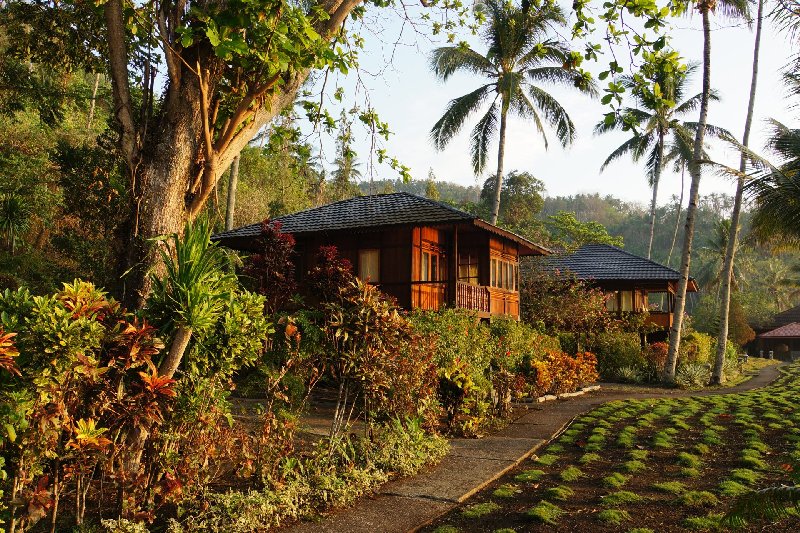 |
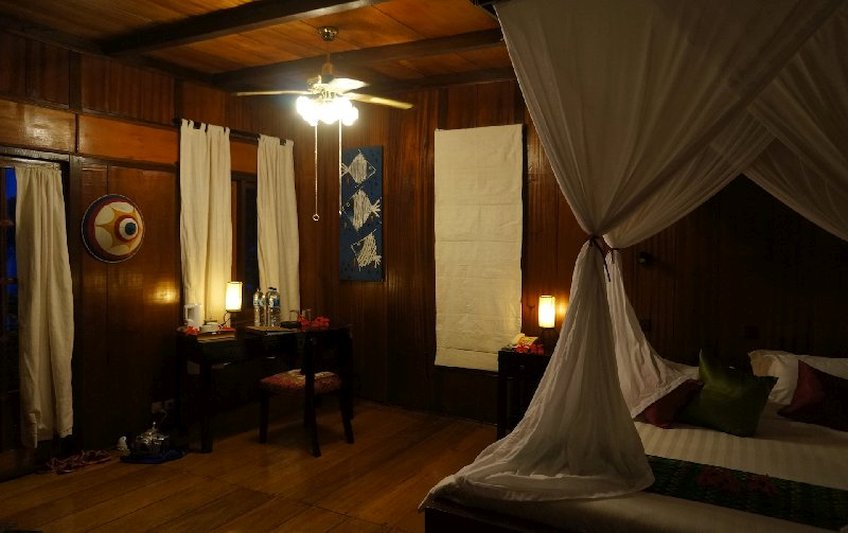 |
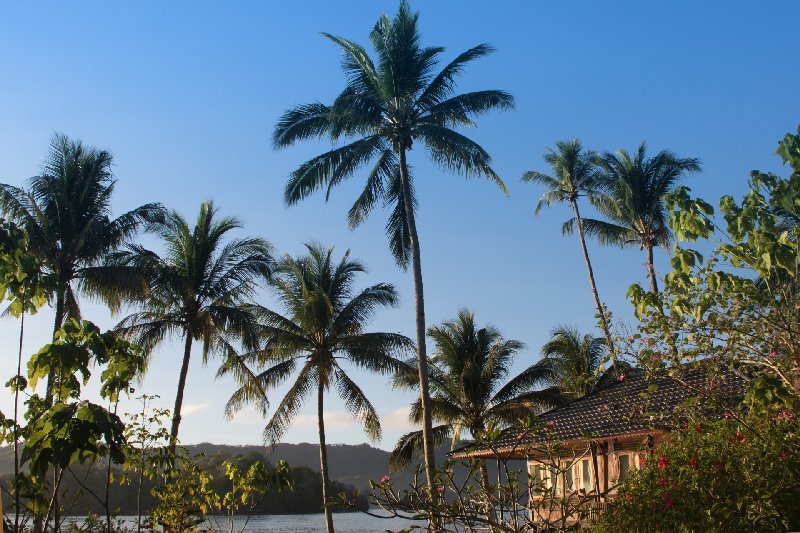 |
To our delight, the beautiful garden with its trees (Mango / Jackfruit / palm trees), bushes (Bougainvillea / Hibiscus / Frangipani) and more has been visited by some interesting birds, including sunbirds, cuckoo, heron - and three kingfishers (Collared Kingfisher) had their lookout on the beach right in front of our house.
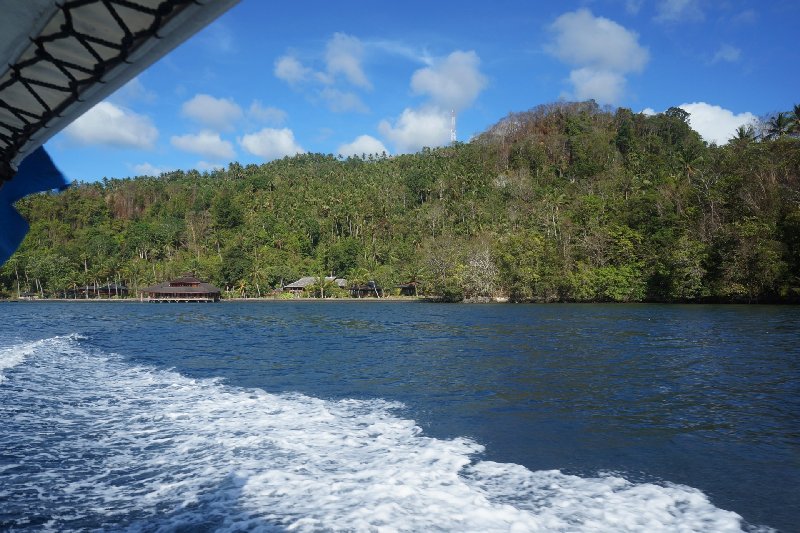 |
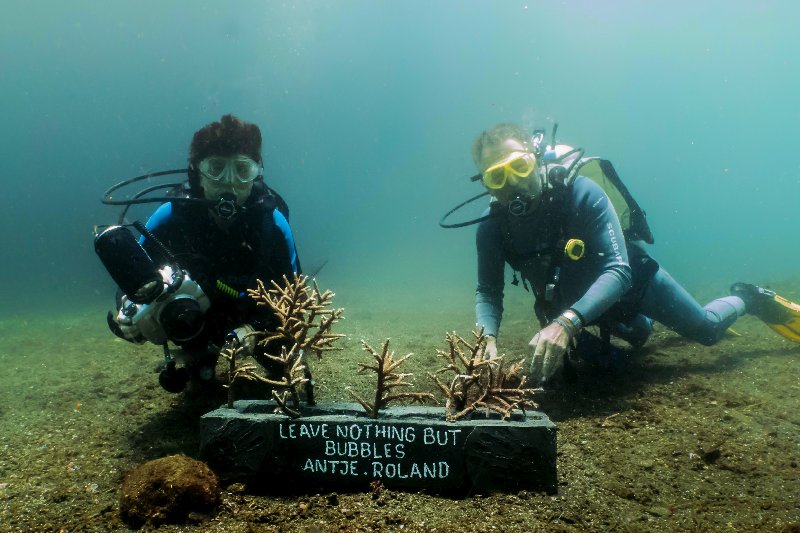 |
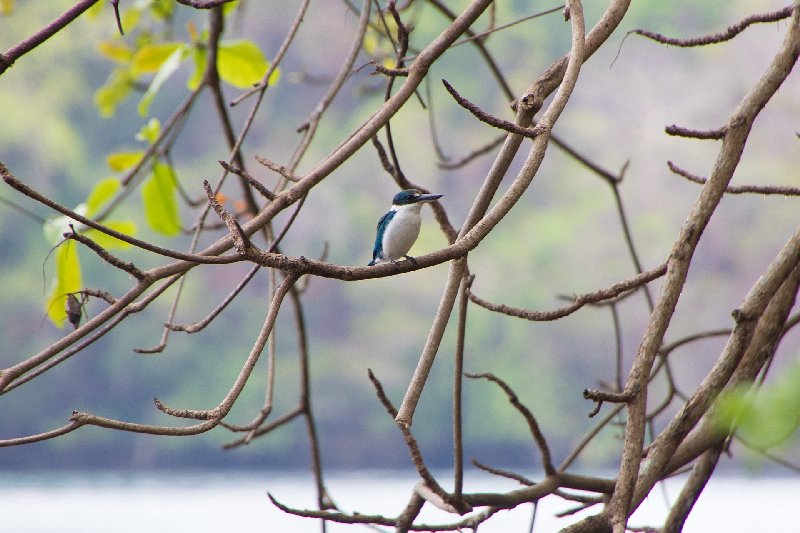 |
Some familiar faces in the dive center still were there, including Ade and Liberty, with whom we dived in 2012 already. The dive boats are large enough. The entrance is via a staircase and can be with or without bottle as desired. After diving water, fruit and fresh towels are offered. After each dive we moved back to the hotel, where coffee / tea and cocoa are already waiting, or the pre-ordered lunch. The diving is done in small groups; usually two divers follow a guide. For underwater photographers there is a large camera room with compressed air, electricity and towels. There are also two large sinks available only for cameras which are carried by the guides on board and back again on request.
The first 8 days of diving we spent in the same team: Jean, Richard, Glen and Pamela from England and Guides Ade, Irfin and Enal. We had a lot of fun with each other and want to send very warm greetings to our dive buddies this way. Together with them we made two very unusual wreck dives (we did not know that this is at all possible in the Lembeh Strait). Only the object of desire, the Blue Ring Octopus didn't want to be watched in our first week.
Only after the final departure of the "British", we were lucky, on our penultimate day of diving we went back to the dive site Serena Besar and searched all along the "BRO" like a needle in a haystack. Guide Jenly then really found it and we could make the long waited for proof pic.
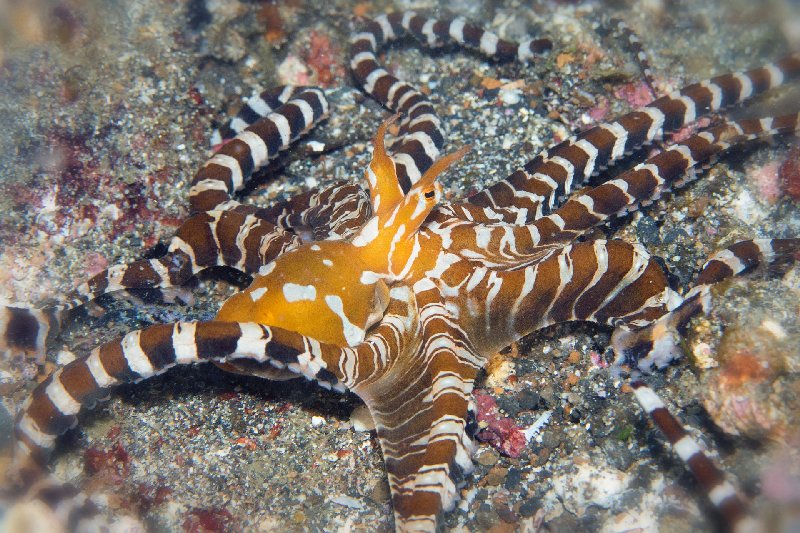 |
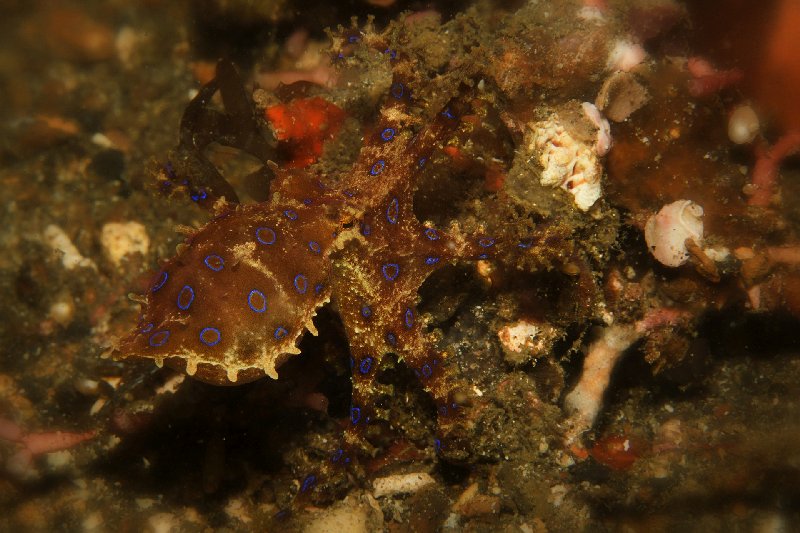 |
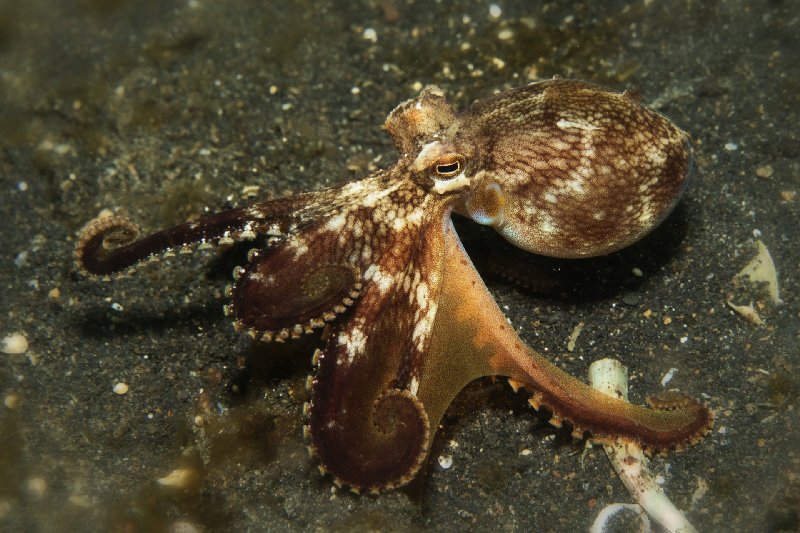 |
During the two weeks of our holiday we made 33 dives each, almost every individual with some kind of "Whow" provided. Some we would like to mention here, since they were also marked in our logbook with several asterisks:
PANTE PARIGI - not least for the Mantis Shrimps, Dragonets, Sepia....
KAPAL INDAH - Wreck-dive where have not been sure to find it initially. Besides lots of beautiful nudibranchs Ade also found the "Lembeh Sea Dragon" (unbelievable).
BATU SANDAR 2 - Antje's personal highlight (muckdive) with seaurgins to the horizon, stonefish, coconut-octopus, moray, crabs and hairy frogfish.
NUDI FALLS - "Leave nothing but bubbles" - here we have sunk our block of concrete to plant an artificial reef.
RETAK LARRY - The most spectacular night dive ever with two guides, Jenly and Enal. Between others: The bobbitworm catching the cardinal hawkfish....
SERENA BESAR - 4 different octopus during one dive: wonderpus octopus, algae octopus, coconut octopu and blue-ring octopus!
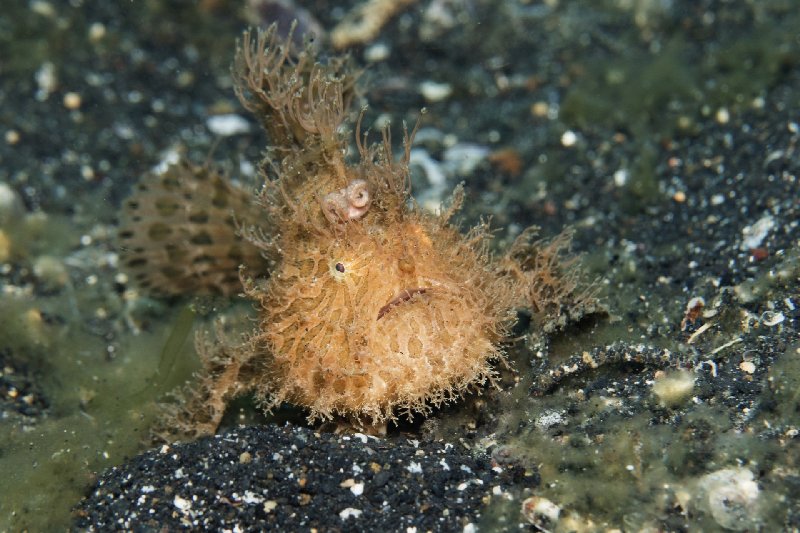 |
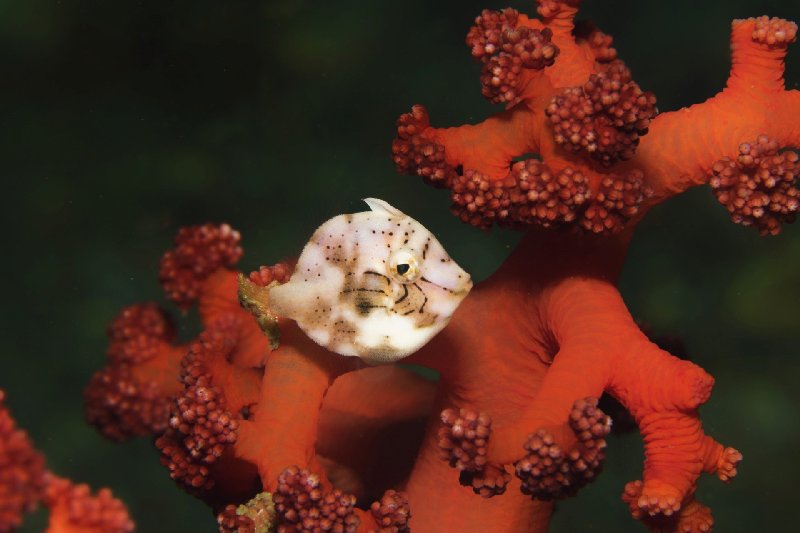 |
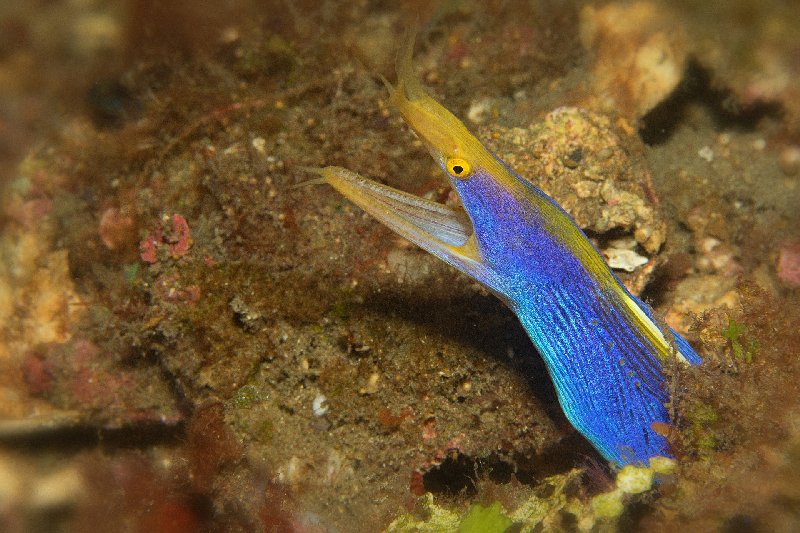 |
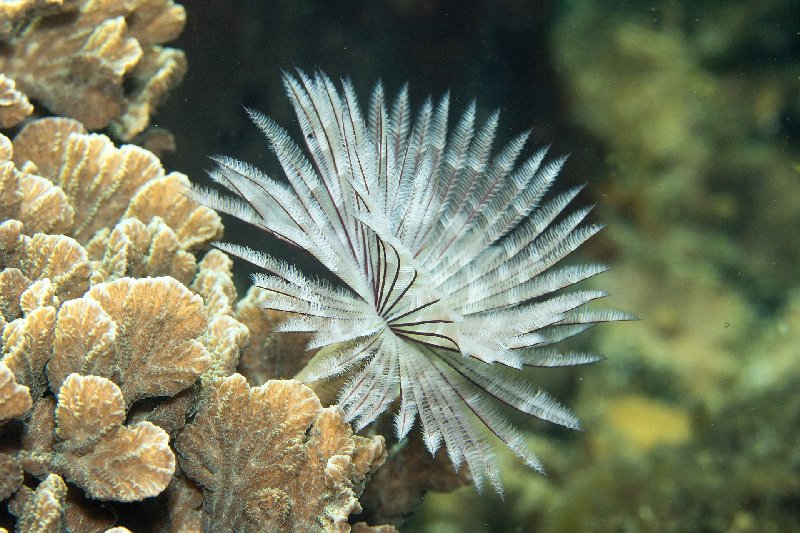 |
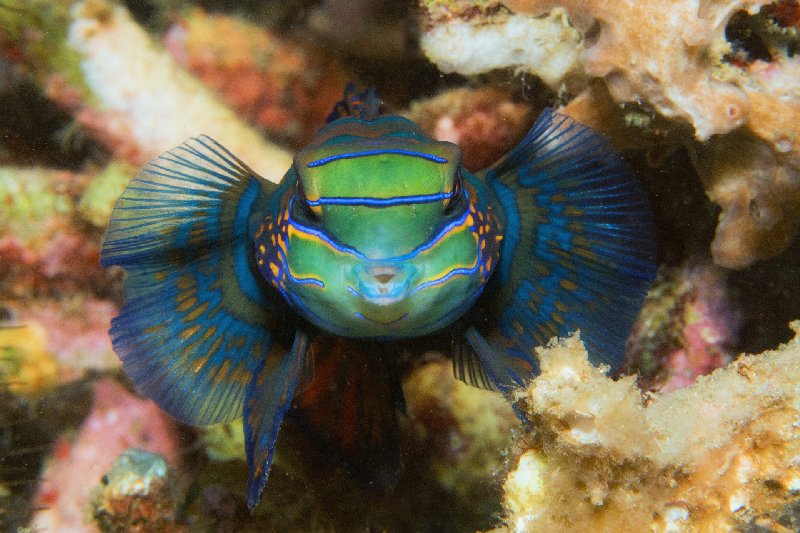 |
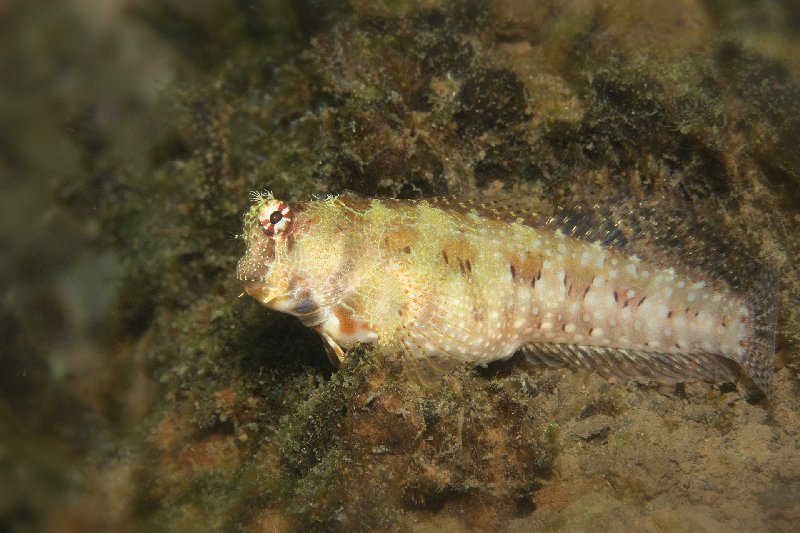 |
For interested readers here a few words on the Lembeh Strait: This is a 15km long Strait between the Island of Sulawesi and Lembeh Island. The Bitung region has developed into a fast growing economic region foremost because of the trade-harbor. Even with this economic development with its negative effects to the environment the Lembeh Strait still is seen as a macro-paradise. The variety of rare and funny looking creatures is indeed extraordinary, for example the frog-fishes, rare scorpionfishes like the Ambon-dragonhead, different nudibranchs, pygmy-seahorses, octopuses and and and....
These, commonly known as critters, creatures do exist here in a density that is unusual. Probably it is because of the sheltered site and the rich of plankton currents which reduces visibility to medium. The water often seems to be more green than blue and is a little lower in temperature than in Bunaken or Manado. Here "swamp diving" for the lovers of small creatures rather than the encounter of giant ocean resident in blue water is the normality.
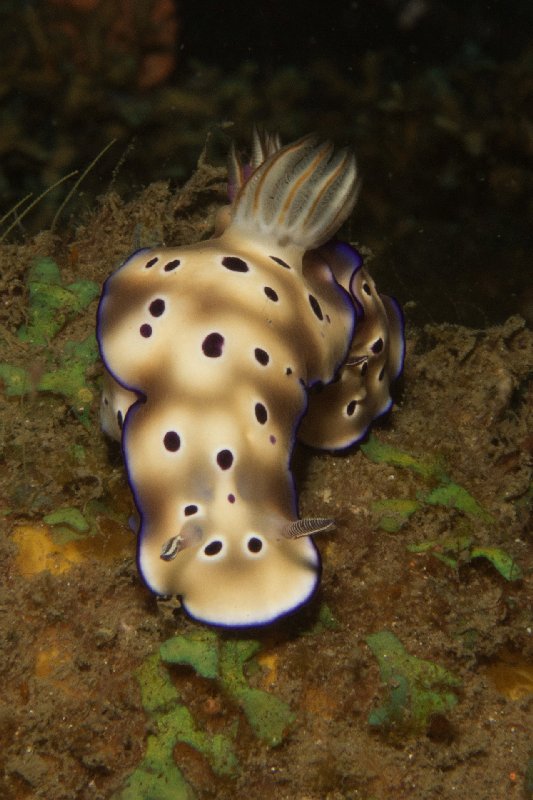 |
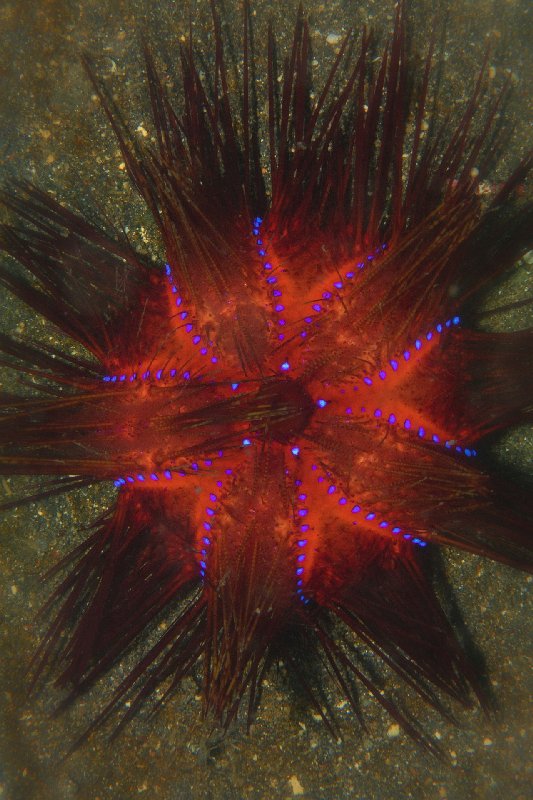 |
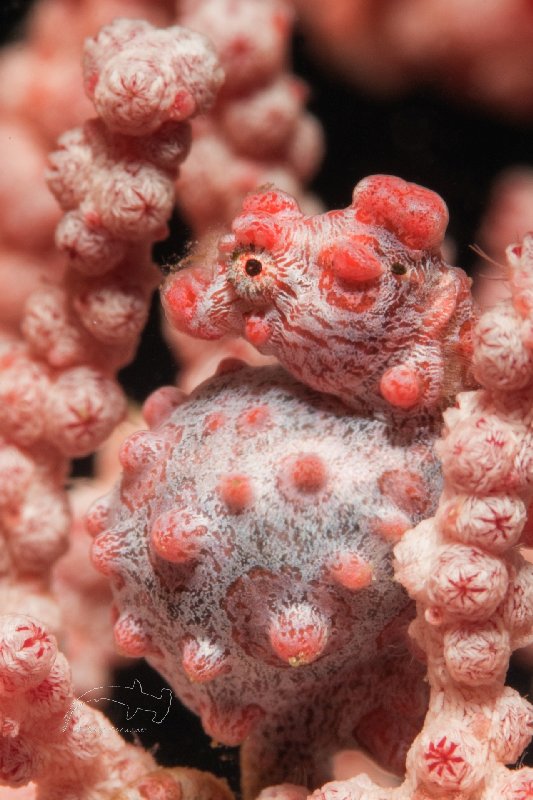 |
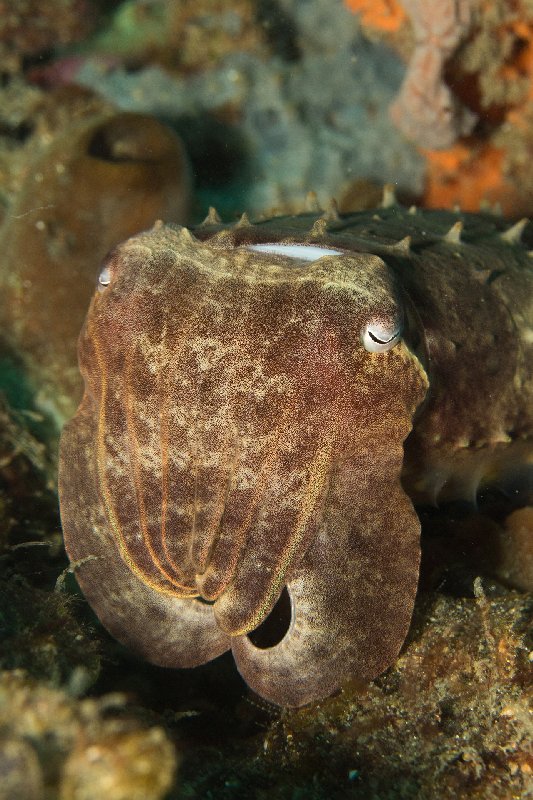 |
Only a few coral blocks exist, most of the critter lives in or at the muddy bottom or in cohabitation with other organisms like soft corals, sea feathers, anemones and hair stars.
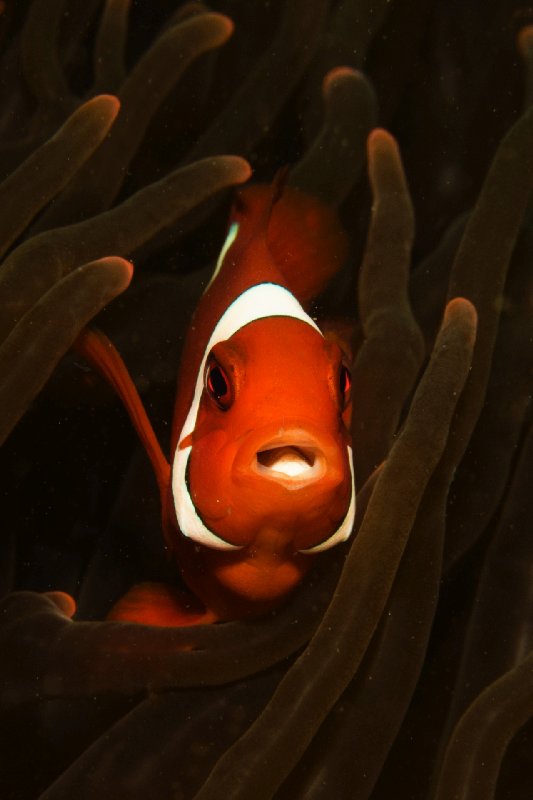 |
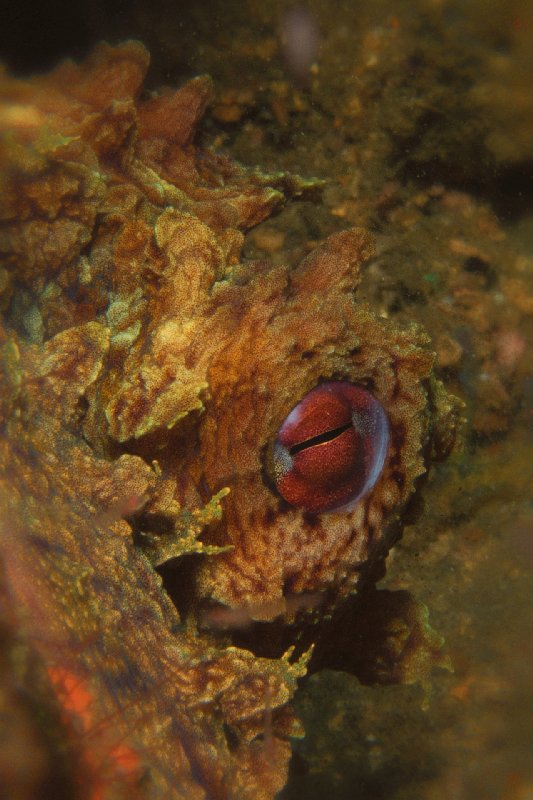 |
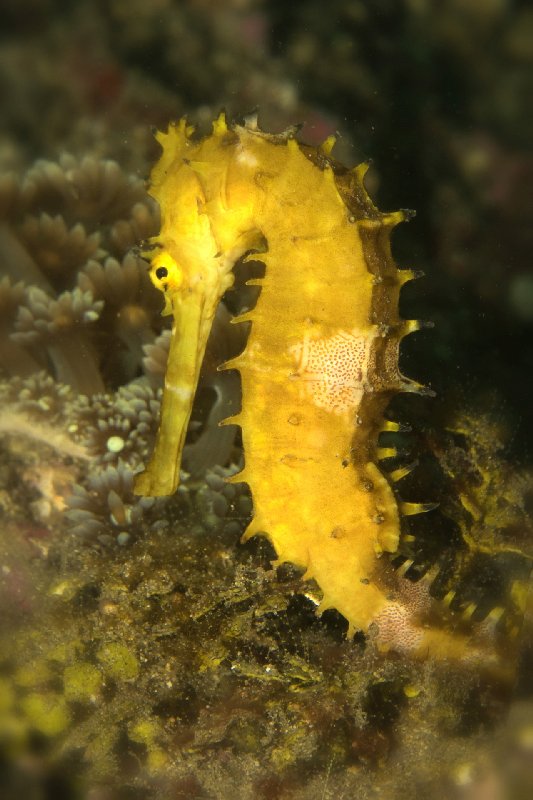 |
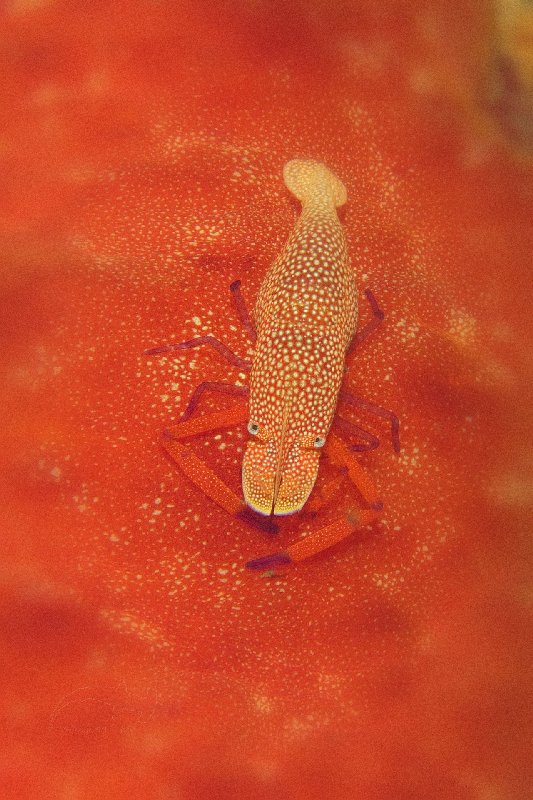 |
We really enjoyed our stay and will definitely come back. Unfortunately the two weeks went by too quick. A big compliment goes to the KUNGKUNGAN PEOPLE. They are unbelievable friendly and hearty. You feel at home instantaneously.
Terima Kasih!